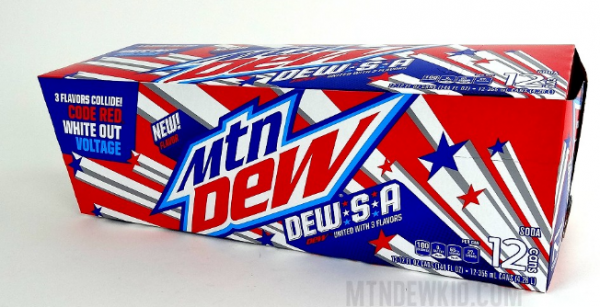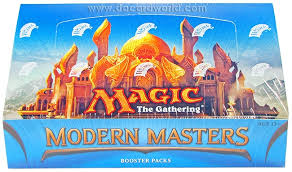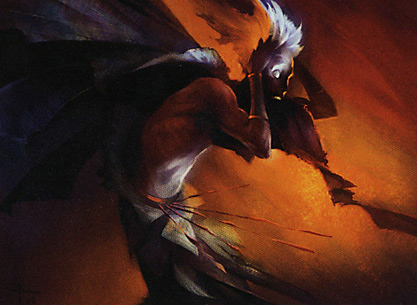Are you a Quiet Speculation member?
If not, now is a perfect time to join up! Our powerful tools, breaking-news analysis, and exclusive Discord channel will make sure you stay up to date and ahead of the curve.
Welcome back, readers!
Today's article was inspired by the crashing prices of most of the Iconic Masters chase cards. Wizards has definitely increased not only the print run but also the frequency of these Masters sets. If we look at the 12-month period from March, 2017 to March, 2018, there are three different Masters sets being released (Modern Masters 2017, Iconic Masters, and Masters 25).
To be fair to Wizards, these sets tend to be a home run. They don't require a lot of design effort (as they are all reprinted cards); they won't impact the Standard format; and WotC always makes sure there are a few chase cards in the set that encourage people to crack packs in hopes of winning the lottery.
Why is this important? When a company introduces a new product that excites consumers, they are more likely to purchase it. However, that excitement comes with diminishing returns. You can only repackage something so many times before consumers become bored with it. Without creating new, original products you will often see companies just keep trying to repackage the old and get a quick revenue boost before they have to move onto the next thing. That's how you end up with this:

It's literally just cans of existing flavors of Mountain Dew (Code Red, White Out, and Voltage) that are repackaged together. I use this example because I fear PepsiCo is the poster boy for this mentality (but don't get me wrong, I love my Mountain Dew White Out). Every year we get some new "game fuel" Mountain Dew flavors that cause a buzz for a couple months (typically tied with the latest Call of Duty game) and then these flavors die off.
The Masters Cash Cow
I bring this up because it honestly sounds a lot like what Wizards is doing with these Masters sets now.

Back when WoTC first introduced Modern Masters (the first of the series), the print run was extremely small. I remember most of the LGSs around me only got eight boxes or less, which was two cases. There was concern back then (I know I brought it up) of a Chronicles 2.0 fiasco; luckily, the print run was small enough that most of the staples bounced back in value. Even the cheaper Commander stuff that didn't fully bounce back made enough newer Commander players happy that it wasn't a big deal.
Fast-forward to today. I know just one LGS in town got 64 boxes of Iconic Masters, which implies the print run was likely 5-10 times larger than the original Modern Masters set. If all 64 boxes were opened (they haven't been, but bear with me), that equals 1536 packs. Assuming about three mythics per box, and discounting foils, that means around 1344 rares and 192 mythics added to the local supply. The set itself has 53 rares and 15 mythics. So if we assume an equal number of each is pulled, that's roughly 25 of every rare in the set and almost 13 of every mythic.
That is a whole lot of new cards added to fill local demand—in fact, it likely exceeds the actual local demand by a significant amount. After all, do you think every store has eight players trying to get a full playset of Horizon Canopy's? What about Glimpse the Unthinkable, a card that used to be $30-$35 and now can be purchased for $8? That's a drop of almost 80%.
Now, I accept that Glimpse is easily one of the worst offenders. It was an older card whose last printing was 12 years ago, and it's typically found only in the realm of kitchen-table decks—but it's not alone. Looking at the prices of Iconic Masters cards we are seeing a huge drop in price. Looking over the list of the rares and mythics, only 15 of 68 have a median value that exceeds the pack MSRP.
If we look at the actual market value (what they are actually selling for), that number drops to 12. This is fantastic news for casuals and players who want cards cheap so they can play whatever deck they want, but for anyone on the finance/speculation/business side it's concerning.
I know there's always talk that what the stores lose in value they regain by buying up cheap copies of cards that will eventually rebound. But the question has to be asked: why are people so sure they will rebound? If WotC continues to spit out Masters sets at a rate of three-plus in a 12-month timespan, it's only a matter of time before we start seeing previous Masters cards get reprinted yet again (looking at you Cryptic Command. Repeated reprints will suppress any hope of a price rebound.

I don't want to be all doom-and-gloom on you because there is still definitely hope. However, the point of writing all this so far is to highlight that the assumption that "prices will rebound" may need to be re-evaluated. WotC has shown that they are loving this Masters cash cow they've got, and they are going to keep whacking at that piñata until no more candy comes out.
Adapting to the New Environment
So how do we as speculators/stores/investors protect ourselves? WotC is a single business entity and they are going to do what is best for them, even if it harms those of us in the above groups. They are beholden to their investors who want profit and growth, not us. However, knowing that, we can change our strategy and how we "weight" the risk of buying/speculating on cards.
Pre-Masters sets, it actually wasn't terribly hard to speculate on Magic cards. It was pretty logical that cards with a certain block- or set-specific mechanic (e.g. infect), or which referenced specific characters from a block (e.g. Inquisition of Kozilek), were unlikely to be reprinted unless we returned to the block or set they originally referenced.
Returning planes were typically spoiled far enough in advance that one could out copies of any cards that might get reprinted before taking a huge financial hit. For example, when they announced the set name, "Battle for Zendikar," I unloaded all my extra Inquisitions. As Kozilek was a character from that plane, I knew there was an increased risk in it getting reprinted. (This didn't actually happen, but I still felt it was unwise to risk it.)
And that is the gist of my article in a nutshell. The risk of reprint went up because some of the factors that would deter a reprint went away. I have since changed my investment strategy from hold to sell.
Reassessing Risk Factors
The challenge with these Masters sets is that they buck those two specific "reprint factors." WotC has shown that they'll put a few cards with a specific mechanic in a Masters set without worrying about it being a main mechanic of the set. For example, the first Modern Masters set had only four cards with persist (two at rare and two at uncommon).
On the other hand, with Conspiracy 2: Take the Crown, WotC was willing to put in Inquisition of Kozilek despite the fact that Kozilek had no part in the narrative of the set.
So, I personally have had to reduce the weight I assign to both of these reprint factors when considering whether to speculate on a card. We can no longer use printability in Standard or a character's relevance to the story as arguments to justify speculation—the weight assigned to those factors has shifted.
"Going Deep" and Long-Term Specs
There was a time when it wasn't unreasonable to "go deep" on a speculation target because, if it hit, you could make very solid profits. I remember reading on the forums about people who had 100, 200, or even 300+ copies of a single card they were speculating on, and that wasn't an unreasonable strategy. Basically, if you dodged a reprint long enough (and you made at least a semi-decent pick) you would likely make some profit.
With the increased print run and frequency of Masters sets, I would argue this is no longer a safe or effective strategy. As one of my favorite quotes from the movie Fight Club says,
“On a long enough time line, the survival rate for everyone drops to zero.”
In my opinion, the single-card speculative strategy is too risky now. It's far safer to diversify your speculation targets and avoid "going deep" on any one, lest you lose the reprint lottery and end up with massive losses.
For similar reasons, it's also no longer wise to speculate on cards you would need to hold for two-plus years to see any true gains. After all, WotC could have six-plus Masters sets out in that time frame, and the likelihood of a reprint increases with each set your card isn't included in.
Reserved List/Old School Buyouts
Finally, I want to discuss the Old School and Reserved List buyouts that have increased in frequency these past last few months. I don't doubt that this is partially fueled by people taking solace in the Reserved List and assuming that the 93-94 format will stick.
Regarding the former, I don't doubt WotC will keep their promise (at least for the foreseeable future). However, I will point out that with some of the flip cards in Ixalan they are showing willingness to creep closer to the line by making similar cards. It's not unfathomable that they might eventually make one that's better than a Reserved List option and end up tanking its value.
As for the 93-94 format, I didn't forget the Tiny Leaders or Frontier crazes that led to some massive gains in cards before petering out. I will admit I haven't played the format—but I question how long it will remain true before pricing itself out, and people realize that the $0.22 Chronicles Erhnam Djinn looks close enough to the $150 Arabian Nights version that the "bling" difference isn't worth it.
If people start to unload copies, we may find the price has been inflated, especially for a format that isn't even Wizards-sanctioned. I accept that there is definitely some collectiblility behind having the originals, but is that worth 68,181%?
Conclusion
So again, I don't want to discourage people from speculating on the game, and I'm 100% confident there's still plenty of opportunity to make money doing so. However, I would be remiss in my duties for a site dedicated to MTG finance not to raise concerns when I see warning signs. I want to encourage people to accept that some of the old speculation methodologies should be reviewed, and likely discarded, in order to reduce one's risk. So take a smart and flexible approach to your investment strategy, and you should be fine.






Now I finally understand why you were asking me those questions last time. This is an awesome article, David!
Yep. Thanks for the kind words.